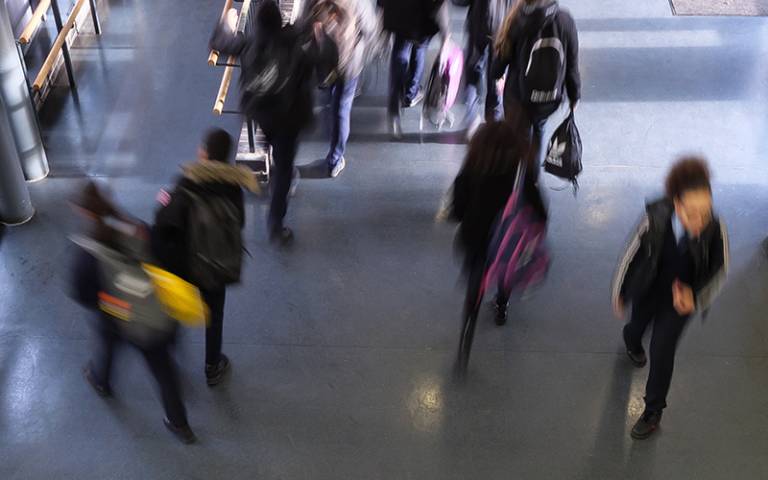A distinct transition phase for year 7 pupils is needed
4 May 2021
A distinct transition year for year 7 pupils (aged 11-12) beginning secondary school should be introduced, according to a new report by UCL Institute of Education (IOE) academics.

The recommendation comes following research that examined year 6 children’s schooling experiences in England (aged 10-11 during the school year 2020-2021) as they moved from primary to secondary school during the COVID-19 pandemic. The academics propose this transition phase should be more than an initial induction for pupils and should take place over at least the whole school year. They advise it should also offer more mental health support and play closer to that of primary school, whilst also allowing for young people to experience the enhanced facilities of secondary school.
Research literature suggests that a smooth transition to secondary school plays an important part in the general development of young people as they move towards adulthood. Successful transitions are often the result of positive home and primary school experiences, including carefully managing children’s expectations of secondary school, ensuring suitable continuity of learning, and minimising any missed learning opportunities.
Many of these factors have been compromised by the pandemic, which led to school closures and the majority of children having to undertake learning remotely. The researchers used a combination of surveys and semi-structured interviews to engage with 196 children and 64 teachers in different regions and social circumstances across England in summer and autumn 2020. They found learning has been increasingly fragmented with some children making greater progress than usual while other children missed out and this was sometimes, but not always, linked to deprivation. The teachers in the study were concerned that this attainment gap will continue to widen.
They also found there were many problems with technology which had created barriers to learning and online transition preparation. These included deficits in national broadband infrastructure and tariffs, as well as hardware availability in some schools and homes. The researchers suggest that improving training in, and use of, educational technology by children and their teachers could help improve secondary school transition processes.
The report also highlights a general picture of uncertainty, compounded by the cancellation of Standard Assessment Tests (SATs) scheduled for the end of year 6, which meant that teachers were unable to formally report on progress in the ways they were used to. Many children reported feeling more anxious than before about their education, as well as their peer relationships at secondary school.
However, the report authors did find that some children attending school during the pandemic, because of Free School Meals (deprivation) status, or parental key worker status, sometimes made accelerated progress as a result of small group attention. Additionally, other children were able to explore their learning interests and hobbies in more depth than usual.
Dr Sandra Leaton Gray, project leader and Associate Professor of Education at the IOE said: “Secondary schools that manage to bridge the gap well between primary and secondary phases set up their students for a lifetime’s successful learning. Improving the quality of breaktimes, dedicating areas of the school to younger students, and providing top quality technology experiences are all key to achieving this in the post-pandemic world.”
Links
- Read the report: ‘Moving up: Secondary school transition processes during the COVID-19 pandemic’
- Moving Up: optimising secondary school transition processes during the COVID-19 pandemic
- Dr Sandra Leaton Gray’s research profile
- Department of Curriculum, Pedagogy and Assessment
- COVID-19 research at UCL Institute of Education
Image
- Phil Meech for UCL Institute of Education
 Close
Close

